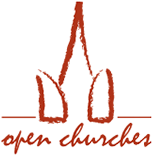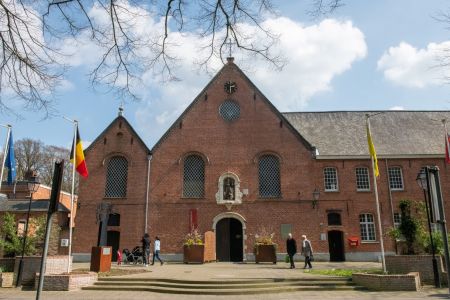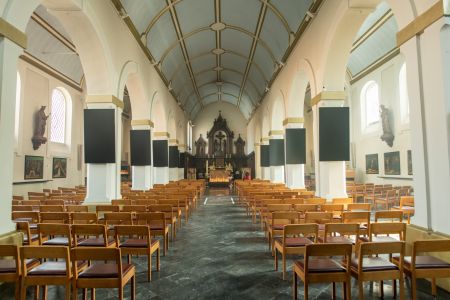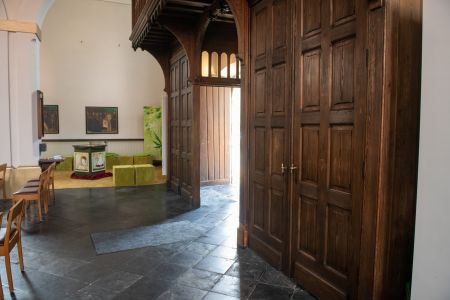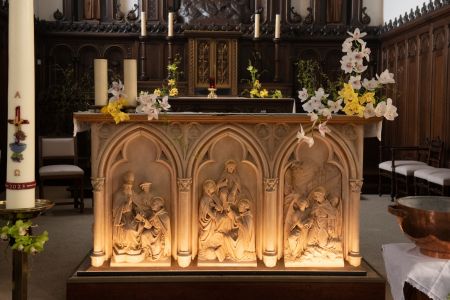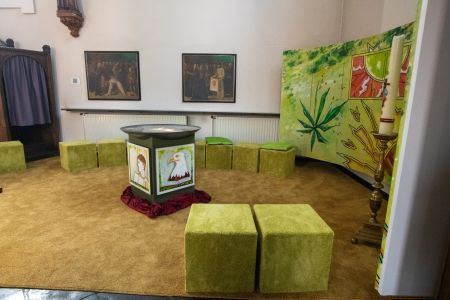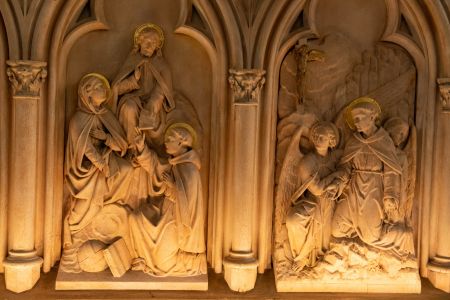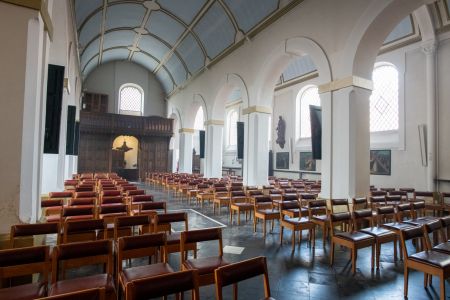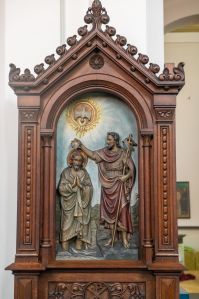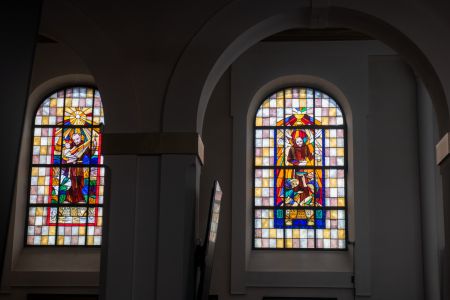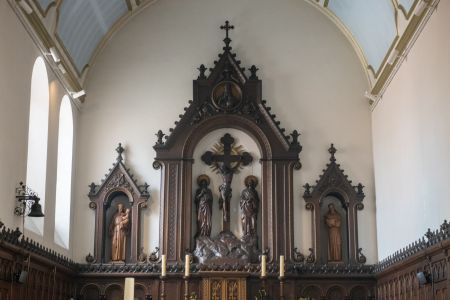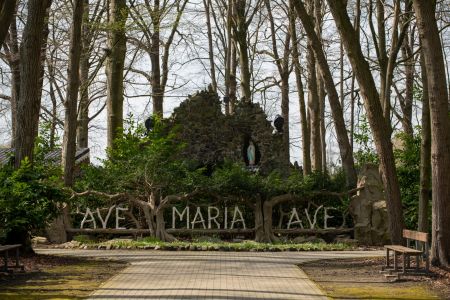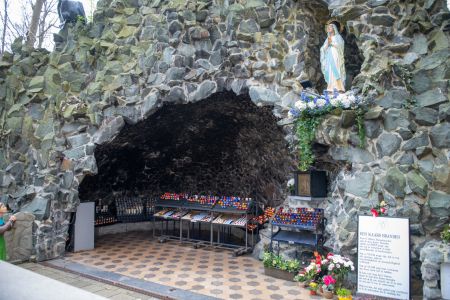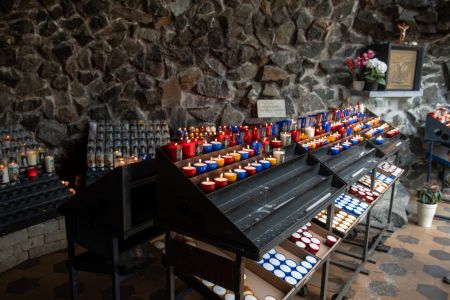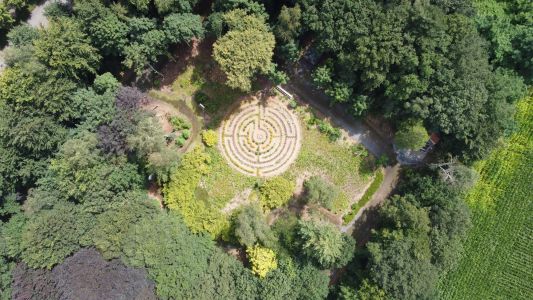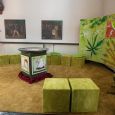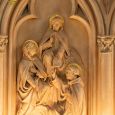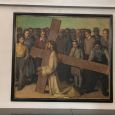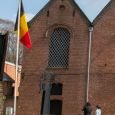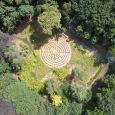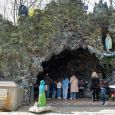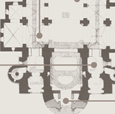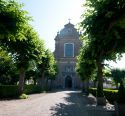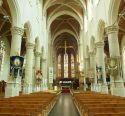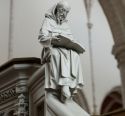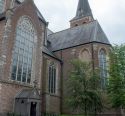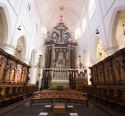Abbey church | 1687 | Gothic | Catholic Church






Map
Opening hours
01 January - 31 December
Mon 7.00 - 18.30
Tue 7.00 - 18.30
Wed 7.00 - 18.30
Thu 7.00 - 18.30
Fri 7.00 - 18.30
Sat 7.00 - 18.30
Sun 8.00 - 18.00
Religious offices
Description
The catholics in the neighborhood of Breda could no longer practice their faith due to mainstream Calvinism, and so some influential families searched for a neighborhood nearby where this would still be possible. The influential baron Jan de Wyse dug deep into his wallet to make the construction of a Capuchin Church possible. Maria Gabriëlla de Lalaing, wife of the Rhinegrave of Salm and Count of the city of Hoogstraten gave their permission to build a Capuchin Monastery on their land.
In 1687, the foundation stone of the monastery was laid, and in 1690 the church was consecrated by the Bishop of Antwerp. The church was enlarged twice, in 1726 and in 1750; because to this day, the Capuchin church remains a very popular religious attraction. This is undeniably due to the conviviality and closeness that is so characteristic to the Capuchins and their employees.
With the accompanying St. Mary’s Park across the street, the Capuchin Church is in addition to a parish and monastery church, also a pilgrimage church. The Marian devotions really took off ever since the Lourdes grotto received a place in the park. This Lourdes grotto was built at the request of provincial minister Jan Baptist Rutten of the village of Meerle, after a miraculous rescue from a storm at sea. To this day, the whole site exudes a Franciscan-Marian spirituality and both young and old find their place here in liturgical, devotional, and educational events.
Video : Kapucijnenklooster Meersel-dreef - YouTube
Photos
Remarkable elements
Source corner with baptismal spring
Artistically realized by father JJ Palliparambil OFM-Cap., resident artist in the monastery. The baptismal spring bubbles throughout the day and is supported by the images of the four evangelists, because we are baptized in the name of Him whose word they have written. The oval wall is a reference to John 1, 4-5, referring to life being the light of all people. This abstract-realistic sacred art dates from January 2023. One can find more information about this in the church itself.
Franciscan service altar and 2 ambos
This beautifully sculpted altar is a former communion rail from the Franciscan church (current art academy) of Antwerp. Visual artist Father Geroen Debruycker later transformed it into an altar for the Franciscan church of the city of Sint-Truiden. When they closed the church in the year 2020, the altar was moved to the village of Meersel-Dreef. The altar depicts moments from the life of Francis of Assisi. Such as the approval of the Franciscan order, etc. The 2 ambos represent 2 Franciscan saints.
Way of the Cross
The Way of the Cross, painted by brother Max of the Brothers of Charity. Very unique as there are no other historical figures to be seen on it except for Mother Mary and Jesus. Brother Max painted this Way of the Cross for the former Capuchin Monastery of the village of Boom, and so the people that one can see on the paintings are residents from Boom in contemporary costume. The whole decorates the church and calls for stillness.
St. Francis with Birds
Mr. Frederick Franck, a Dutch-American artist made the first design that is now located in New York. Replicas can be found in the Netherlands in the cities called ‘s-Hertogenbosch, Megen and Amsterdam. What one can see here standing in front of the church was created with permission from the Franck family and produced by Sprangers welding works from the city of Hoogstraten. It is completely made of metal. The statue is located on the church square and greets all pilgrims, churchgoers, retreatants and other casual visitors.
St. Mary’s Park - The labyrinth
The sacred domain is broader than the church building alone. Opposite the church, one can find St. Mary’s Park. and in the far left corner, one can find the Franciscan labyrinth. In the summer it is a true natural work of art. The labyrinth has the same measurements as those of the cathedral of Chartres and is given shape here in the form of flowers and plants; according to the colors of the natural elements as sung by Saint Francis in his Canticle of the Sun. One can walk into the labyrinth and find questions along the way from the letter of Saint Clare of Assisi to Saint Agnes of Bohemia.
St. Mary’s Park - The Lourdes Grotto
St. Mary’s Park has been in existence since 1686. And the Lourdes Grotto has stood there since 1895. The Lourdes Grotto in St. Mary’s Park was built out of robust boulders, amongst which one from the city of Lourdes itself. The Lourdes Grotto and open ‘four spaces’ is part of our green open-air cathedral. The Lourdes grotto thanks its existence to a promise made by the former Provincial Father Jan Baptist Rutten to Mother Mary to build a sanctuary for her in the Himalayas if they were to survive the rough storm at sea. They survived, but from a political standpoint it was safer to build the grotto in Belgium. It became an unheard of religious attraction.
